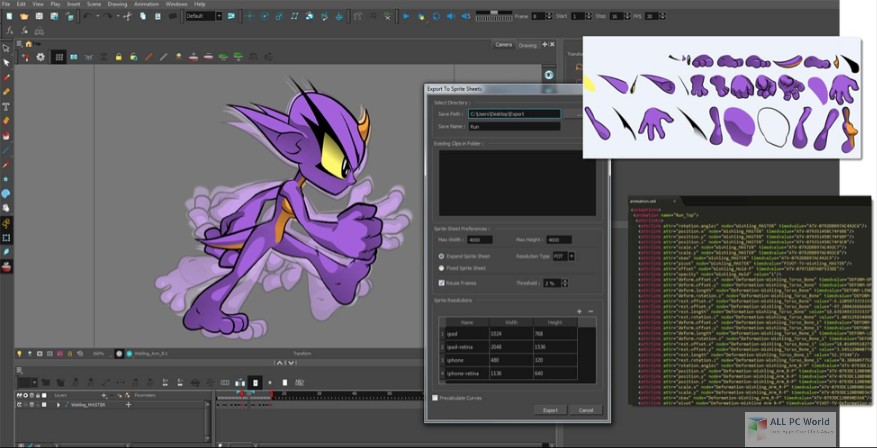
If you want to combine different motions such as a rotation and a scale, you can record the motions separately using parented pegs. When you release the pointer, the speed path of your animation is recorded.Ĭlick the Play button to view your animation. Drag to rotate the drawing.Īs you translate, scale, or rotate your drawing, small dots are created to represent the keyframes of your animation. Rotate: Position the pointer on the rotation handle or rotation point at a corner of your drawing. Scale: Position the pointer at one of the bounding box points, and drag to scale your drawing. Translate: To move the drawing, position the pointer over your drawing and drag it to a new location on the screen. In the Animation toolbar, click the Instant Motion button.Ī bounding box with control points and a rotation handle appear around your drawing, and the Instant Motion box opens.ĭo one of the following to animate your drawing (only one single transformation type is possible per motion recording):

Each one is automatically added to the end of the last one.Ĭreate a drawing -see Drawing and Design. You can create more motion paths, one after the other. As you continue to move your drawing, by default, the path is automatically extended. Your animation can be as long or as short as you like. It is represented on the Timeline view as a path. Once you release the pointer, your animation is created. The slower the movement, the more dots are created. As you manipulate your drawing, small dots are created, representing keyframes. First, you create a drawing and then you translate, scale, or rotate it. With Instant Motion, creating animation could not be easier.


 0 kommentar(er)
0 kommentar(er)
